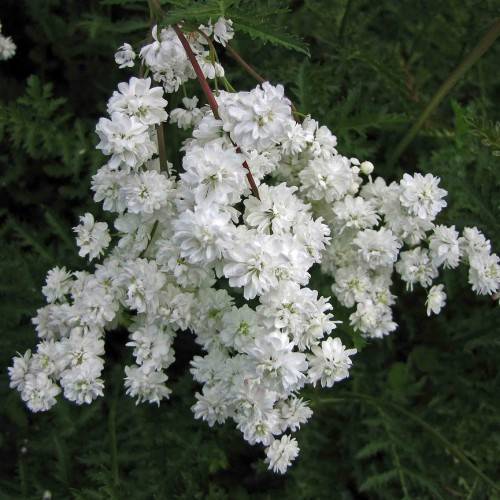
dropwort
Filipendula vulgaris
Cycle:
Herbaceous Perennial
Watering:
Minimum
Hardiness Zone:
3 - 9
Flowers:
Flowers In Summer
Sun:
Full sun
Soil:
Alkaline
Fruits:
Fruits In Autumn Ready In Fall
Leaf:
Yes
Growth Rate:
Low
Maintenance:
Low
Poisonous To Pets:
Yes
Care Level:
Medium
watering
Dropwort grows best in moist, well-draining soils and does not like to dry out completely. It should be watered regularly with small amounts, allowing the soil to dry slightly between each watering. During the growing season (Spring and Summer), water the plants every 3-4 days or so. In the winter, reduce watering frequency, allowing the soil to dry between each session. If you are unsure whether the soil is completely dry until the next session, use your finger to feel the level of moisture in the soil. Do not water if the soil is still moderately moist. At all times, avoid overhead watering and flooding of the soil.
sunlight
Dropwort (Filipendula vulgaris) thrives in full sunlight, meaning it needs at least 6 hours of direct sunlight each day, for best growth and blooming potential. It should be planted in an area where it can receive direct sunlight for most of the day, ideally from early morning until late afternoon. In some areas, it may need a bit of afternoon shade, especially during times of extreme heat, in order to reduce the risk of sun scald. Additionally, sheltered locations are important, as this species can be susceptible to strong winds which can damage its delicate branches and leaves.
pruning
Dropwort (Filipendula vulgaris) should be pruned in early spring, before the plant begins to produce new growth. Cut back stems that are dead, damaged, or have become overgrown. Cut flailing stems back to their base and thin the plant to reduce overcrowding. Pinch or prune newly emerging flowers to encourage the production of fuller growth. Pruning can also be done in late summer to remove spent blooms and reduce the overall size of the plant. This can help keep dropwort looking neat and tidy, while also promoting new flowers.
